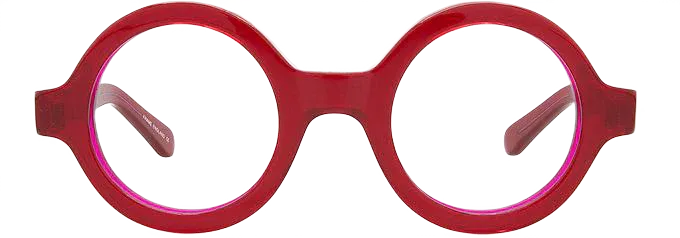What’s in it for you
A clear structure for my writing and work: FinOps from the top down, driven by one idea: context is everything. Free essays teach, subscriber pieces build, and tools turn ideas into action. This publication helps you think better about cost, complexity, and how technology shapes business.

Let’s be honest: I’m doing this for myself as much as for you.
I get distracted by new ideas, new tools, the next shiny thing. You can see that on my digital garden. Curiosity is fuel, but if I want to keep sharing what I learn in a way that makes sense, I need structure. This post is that structure.
Why define this?
Writing, like architecture, needs foundations. Without them, everything leans.
This site reflects my personal mantra: learning and sharing. It’s how I think in public: experiments, models, and the occasional half-mad idea. But it needs a frame; otherwise it turns into my Zettelkasten, a digital jungle of fascinating but disconnected thoughts.
So this is me setting the scaffolding.
The purpose
frankcontrepois.com exists to make FinOps evolve, not only as a cost discipline but as a way of thinking about technology, money, and context.
FinOps has, for too long, started at the bottom: in spreadsheets, tags, and daily firefights. I want to start at the top. Strategy first, alignment first. That’s the only way the rest can make sense.
This publication, like my company Coblan, follows one principle above all: context is everything.
When context is missing, we optimise the wrong thing.
When it’s present, we design better systems for people, not dashboards.
That’s what drives me. But here’s why it might matter to you.
What’s in it for you
If you’re here, you probably care about more than cloud bills. You care about how technology shapes business, and how decisions about money reveal what a company truly values.
This publication is for people who think like architects: those who want clarity before optimisation, and design before detail.
You’ll find essays that help you see FinOps differently, frameworks you can use in your own organisation, and tools that turn ideas into action.
If you want quick wins, there are plenty of other places to go.
If you want to understand why something matters before deciding how to fix it, you’re in the right place.
The ambition
I want FinOps to grow up. Not merely to grow bigger, but broader.
Too often, FinOps lives in the basement: buried under engineering layers, dashboards, unit costs, and good intentions. It’s treated as a technical discipline when it should be a strategic one.
I want FinOps practitioners to understand the drivers of the board, of finance, of executives, of engineers. I want them to stop staring at dashboards and start having conversations that make people think in FinOps terms.
I want practitioners to use executive language, able to stand in the boardroom alongside EBITDA or customer acquisition cost.
To get there, I need to get better at it myself.
I see top-down FinOps as the way forward. It gives executives the context and language to make decisions, not merely read reports. It fits alongside the frameworks they already use: financial dashboards, OKRs, strategy maps, Wardley Maps, and the rest.
The foundation
One sentence shapes everything I write:
Context is everything.
Data without context is noise. Knowing who it serves and why it exists turns FinOps from accounting into understanding.
Everything on this site—essays, tools, reflections—connects back to this idea.
The publication model
Like any well-designed system, this site has layers:
| Layer | Frequency | Access | Purpose |
|---|---|---|---|
| Framework essays | Once a month | Free | Big, timeless ideas that define how I think. |
| Toolkit / CUR Validator / Coblan | Three times a month | Subscribers | Practical depth: tools, experiments, lessons from real work. |
| News-triggered reflections | Weekly (usually twice) | Subscribers | Short, timely analyses linking current events to the frameworks. |
| Tools and artefacts | Alongside articles | Paid | Tools, documents, lists, and other resources to implement what the essays describe. |
| Digest | Occasional | Free | Recaps that connect the dots—likely generated by AI (I’ll supervise, I promise). |
Free content brings in new readers and opens conversations.
Subscriber content is for those who want to go deeper—into the how, the why, and the now. Paying subscribers get tools, templates, and other working material.
The philosophy
I write the way I build: by layers, with context, powered by curiosity.
I don’t chase algorithms or arbitrary content calendars. I prefer rhythm: a learning cycle of think, apply, reflect, refine.
Some posts are reactive, sparked by a release or a FinOps debate. Others are evergreen—frameworks designed to last. Both matter. One gives speed; the other gives stability.
What’s next
Over the next months, I’ll reshape older posts to fit this structure. Some will become free frameworks; others will move into the subscriber archive where they belong.
The first two frameworks—context is everything and top-down FinOps—will anchor this next phase. Around them, the FinOps Toolkit, CUR Validator, and Coblan will grow as living examples of ideas turning into tools.
Closing reflection
If Stratechery has aggregation theory, this site has context.
If FinOps is about numbers, this space is about meaning.
The free essays are for learning—open to all, because good ideas spread faster when shared.
The subscriber pieces are for building—where ideas meet code, data, and real-world messiness.
My aim is simple: to help people think better about cost, complexity, and creation. To do it in public, for those who want to learn, and in depth, for those who want to build.
Next step
If you want to see this philosophy in action, explore the FinOps Toolkit.
Or start where it began, with Context is everything.
